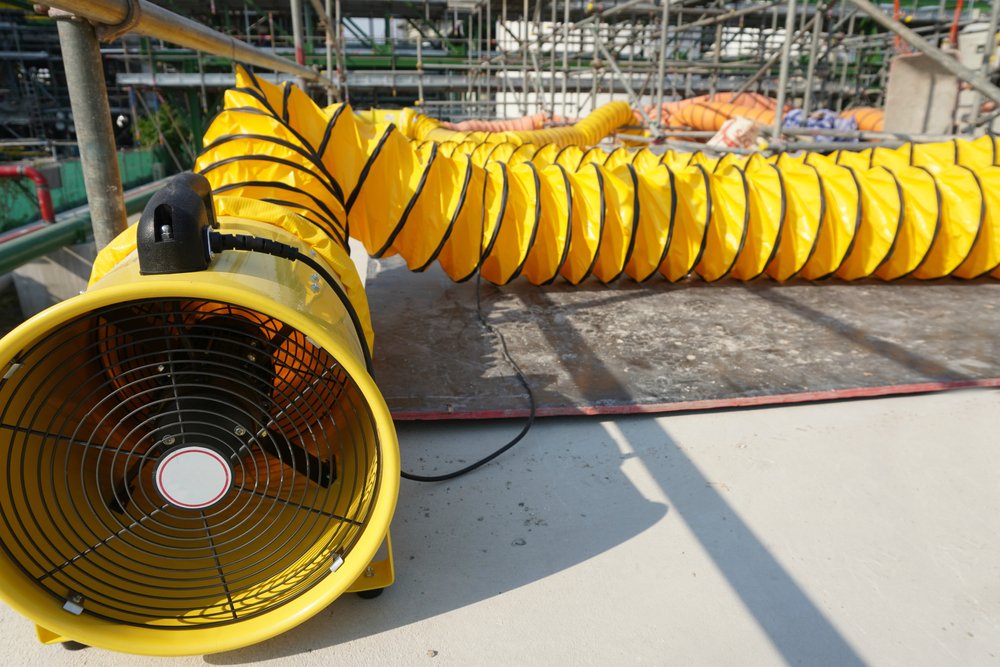Have you ever considered the importance of the humble ducting in your home heating or cooling system? Or the various materials from which they’re made and why? We often overlook these vital components, but they play a significant role in maintaining a home’s comfort level and ensuring efficient energy use. This blog post seeks to demystify the world of flexible ducting and shine a light on its unsung heroes – the diverse materials used in its manufacturing. We will traverse a rich spectrum of flexible ducting materials, exploring their properties, applications, and potential downsides.
Your home’s heating, ventilation and air conditioning (HVAC) system is more than just a luxury; it’s a necessity that ensures your abode remains comfortably warm in winter and refreshingly cool in summer. The unsung hero in this process is the flexible ducting, particularly its composition. Understanding the materials used in flexible ducting manufacturing is the key to maximising efficiency and, by extension, your comfort.
Welcome to a comprehensive exploration of the fascinating world of flexible ductings – their materials, manufacturing processes, benefits, possible drawbacks and importance in various applications. If you’ve always been intrigued by the behind-the-scenes elements that contribute to a well-functioning HVAC system, this guide is for you.
An overview of Flexible Ducting
Inching our way across your home, it’s impossible not to recognize the immense role played by the hidden conduits of warmth and coolness – the flexible ducts of your HVAC system. These integral elements in your household are composed of various materials each enhancing the duct’s overall flexibility, durability, and efficiency.
Flexible ducts have been revolutionised thanks to technological advancements and engineering prowess. Their construction primarily involves an inner core made of different materials such as wire coil, plastic, and fibre reinforced with wire helix. Wrapping around this core is a layer of insulation and finally an outer protective jacket. Each component plays a crucial role, with the material choice greatly impacting its performance.
Understanding the materials used in their manufacture forms the basis of selecting suitable flexible ducting. This knowledge can assist in making an informed decision about the best option for your home or building project, contributing to creating the most comfortable and energy-efficient environment.
How the Materials Influence Duct Performances
It’s no secret that the materials used to manufacture a duct significantly influence its performance. This relationship is particularly important when considering factors like temperature resistance, humidity management, durability, and pressure handling.
Materials such as metal and fiberglass offer exceptional durability and resistance to high temperatures. These are commonly used in environments where such properties are necessary. Conversely, plastic ducting, while less heat-resistant and durable, offers advantages in terms of flexibility and cost-effectiveness.
The crux? Every material used in the manufacture of flexible ducting has its own set of advantages and disadvantages. By understanding them, one can make an informed decision to align with their specific needs and circumstances.
A Close-up on Common Ducting Materials
Let us delve deeper into the specifics of commonly used materials in the production of flexible ducting. Aluminum, fiberglass, and plastic are three of the most commonly used materials, each offering specific benefits.
Aluminum ducts are exceptionally durable and temperature-resistant, providing long service life. Meanwhile, fiberglass ducts are energy-efficient, offering excellent thermal insulation properties. Finally, plastic ducts are typically cost-effective and offer great flexibility for easier installation and adjustment.
Each of these materials brings certain qualities to the table, shaping the overall performance of the ducting. Understanding them helps in making an educated choice that aligns with the specific requirements of each home or building project.
Pros and Cons of Ducting Materials
Understanding the pros and cons of the ducting materials not only aids in making a well-informed decision but also helps anticipate any future maintenance or performance issues.
Aluminum, though durable and heat resistant, may be more expensive and less flexible compared to other materials. Fiberglass, while excelling in thermal insulation, requires careful installation to prevent damage. Moreover, damaged fiberglass ducts may release glass particulates into the circulated air, causing health concerns. Plastic, despite being cost-effective and flexible, can degrade over time, especially under high temperatures.
The decision comes down to assessing your specific situation, considering factors such as climate, budget, and installation conditions.
The Evolving World of Ducting Materials
The flexible ducting industry is continuously evolving, pushing the boundaries of material science. Innovative materials and manufacturing methods are being explored to improve the performance, efficiency, and lifespan of flexible ducting.
Emerging trends in flexible ducting materials include the use of fire-resistant and microbial-resistant materials to enhance safety and longevity. The industry is also exploring sustainable materials for more eco-friendly ducting solutions, thus reducing the environmental impact while still delivering high-performance products.
Conclusion
No matter the season, flexible ducting plays a significant role in maintaining the comfort of your home. The materials used in their manufacturing significantly impact their overall performance, durability, and efficiency. Understanding these materials – their benefits and possible drawbacks – can assist in making well-informed decisions related to your building project or home HVAC system.
The selection of a suitable flexible ducting material essentially hinges on individual requirements, budget constraints, and specific environmental conditions. With the continuous evolution in this sector, the future of ducting materials looks bright with the promise of increased efficiency and sustainability.
Knowledge, they say, is power. Armed with an understanding of the vital role of ducting materials, you are duly equipped to ensure the wheels (or, in this case, the coils) of your home’s HVAC system run as smoothly and efficiently as possible.




